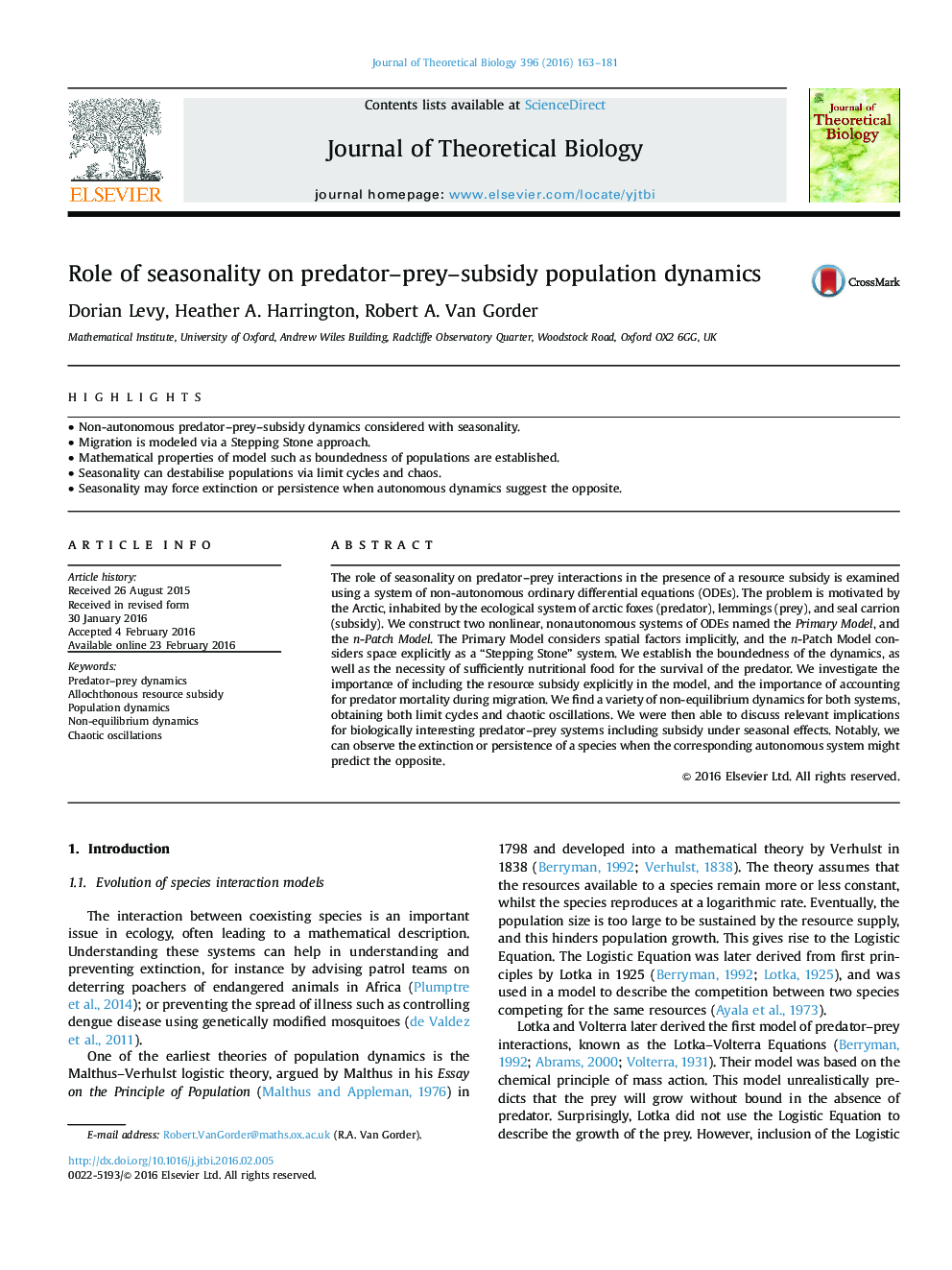| Article ID | Journal | Published Year | Pages | File Type |
|---|---|---|---|---|
| 6369307 | Journal of Theoretical Biology | 2016 | 19 Pages |
Abstract
The role of seasonality on predator-prey interactions in the presence of a resource subsidy is examined using a system of non-autonomous ordinary differential equations (ODEs). The problem is motivated by the Arctic, inhabited by the ecological system of arctic foxes (predator), lemmings (prey), and seal carrion (subsidy). We construct two nonlinear, nonautonomous systems of ODEs named the Primary Model, and the n-Patch Model. The Primary Model considers spatial factors implicitly, and the n-Patch Model considers space explicitly as a “Stepping Stone” system. We establish the boundedness of the dynamics, as well as the necessity of sufficiently nutritional food for the survival of the predator. We investigate the importance of including the resource subsidy explicitly in the model, and the importance of accounting for predator mortality during migration. We find a variety of non-equilibrium dynamics for both systems, obtaining both limit cycles and chaotic oscillations. We were then able to discuss relevant implications for biologically interesting predator-prey systems including subsidy under seasonal effects. Notably, we can observe the extinction or persistence of a species when the corresponding autonomous system might predict the opposite.
Related Topics
Life Sciences
Agricultural and Biological Sciences
Agricultural and Biological Sciences (General)
Authors
Dorian Levy, Heather A. Harrington, Robert A. Van Gorder,
